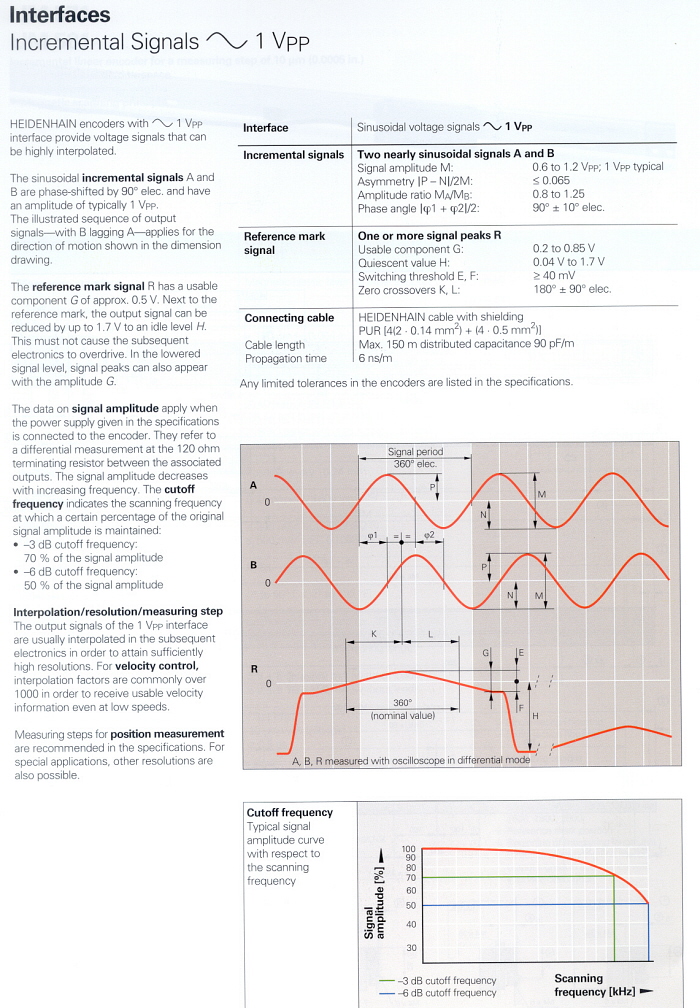Yes....
Their tester appears to check all the relevant aspects of the output signal, and should allow you to get the light and whatevers adjusted to get signals centered in their acceptable ranges.
It apparently does NOT monitor the lot at once...
And there is an ominous note about "different expansion modules available for checking the different encoder signals". Sounds like what you see is the reader head, and you need several other goodies at extra expense to see all the relevant signals.
With the scope, you will be trying to check the various things individually. It looks like you want a 4 channel to see it all, but may be able to use a 2 channel to check one signal at a time.
The critical issue seems to be consistent timing between the two 90 deg square waves, and that requires seeing them both, so for final adjustment you would have to look at only one half of each differential signal with the 2 ch scope. Probably OK, maybe not.
You mentioned a problem that boils down to a speed problem. power feed ok, hand feed sends it into the weeds.
That suggests a problem that affects the signal amplitude from the analog reader head to the digital processing, so that a little faster feed, and it might not get the signal due to some sort of roll-off with frequency. Faster feed movement gives a shorter signal, meaning higher frequency. There is a comment about that in the spec.
The good thing is that you KNOW you want one thing, bulb adjustment.
I would think that you need to get the adjustments so that the square wave looks the same on both signals when in max speed power feed. Then seeing that each is centered up with its low-high or high-low transition at middle of the other pulse should do the job.
Amplitude AND duration of each high and low the same AND same as the other signal. Amplitude on the digital side is likely no problem. Duration of the digital pulse is likely affected by amplitude on the analog side of the head.
Then getting the two lined up..... Could be better done in reverse order (timing first, then amplitude), but I don't know... my suspicion is that amplitude will affect timing, so to do that first. They may be linked enough that you will end up needing to zero in both together.
Bulb position would definitely have an effect on the signal amplitude, I'd think.
There PROBABLY are test points in teh pickup circuitry.... that would allow you to see the analog side of the signal and adjust better to maximize the signal and adjust the relation between teh A and B sides, etc, etc.
At the end of the cable you are stuck with seeing the signal as processed.
That processing probably includes what is likely a "schmitt trigger" comparator, set to "decide" it has a signal at a particular amplitude. The bulb position etc would affect the point at which it decides it has a signal, by affecting the analog signal amplitude vs position.
You should be able to do it with the scope, but it may be rather insensitive to the adjustments, or seriously non-linear. And if you don't have the filament in the right spot, the other adjustments may be sorta meaningless...
Plus, at higher traverse speeds, the timing might get short. The mention of 0.25 uS (250 ns) timings suggests the need for a 'scope with over 100 mHz response.
As to how to set the screws.... no idea, and no guesses without seeing it.
But, from your statements about where the screws are it may be that they are intended to block light and set the edge of the light as it hits the scale. That, and the filament position, would change the edge of the light for each half of the scale, and thus the timing between them as the head moves (I assume it has a scale portion for each of the two signals).
Just my guesses, fwiw








 I've never heard of micro-butts before and would think that you're really looking at uApp (micro-amp, peak to peak). I think hammerhead has it nailed as far as what these units really mean (voltage output vs current output).
I've never heard of micro-butts before and would think that you're really looking at uApp (micro-amp, peak to peak). I think hammerhead has it nailed as far as what these units really mean (voltage output vs current output).
 )
)